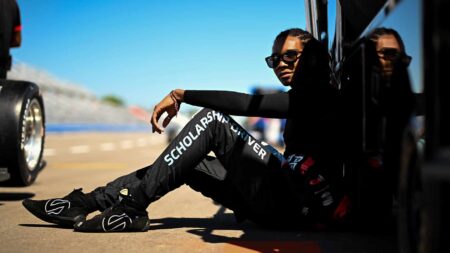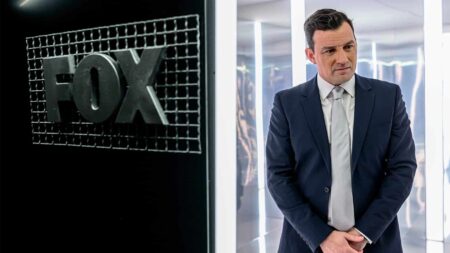
Lundgaard: McLaren can make history with F1/IndyCar double win
Christian Lundgaard is McLaren's new IndyCar star – and wants to make history by helping the team win both in F1 at Bahrain and at Long Beach Stateside on the same day

Retired Ford Racing and Jaguar executive Neil Ressler (above) convenes an industry round table next week to discuss the motor manufacturers’ interest in the IRL’s new IndyCar formula for 2011. Over the next few months, as Ressler reports back to the IRL on the findings from his meeting with the manufacturers, many racing industry experts in America are expected to put in their two cents worth about what the new formula should or shouldn’t be.

14 May, 2006, Indianapolis, Indiana, U.S.A, Roger Penske (l), A.J. Foyt (c), and Bruce Ashmore (r) 2006
One man who has thought in detail about the new IndyCar formula is Bruce Ashmore who’s been involved in Indy car racing for thirty years. Ashmore started his engineering career at Lola Cars in his native England in 1976 and worked his way up to become Lola’s chief Indy car designer in the late eighties and early nineties before becoming Reynard’s primary, US-based development engineer.
These days, Ashmore is an engineering consultant to C&R Racing in Indianapolis and helped develop the current USAC Silver Crown car. C&R Racing employs fifty people and builds chassis, transmissions, driveline components and cooling systems for a wide range of racing categories including all three major NASCAR divisions, ALMS, Grand-Am, sprint cars and midgets.
For many years Ashmore sat on CART’s rules committee and a few years ago he worked with fellow engineers Brian Lisles and Tom Brown, among others, to write a design brief for Champ Car’s Panoz spec car. Recently, following some conversations with Honda Performance Development’s new boss for Eric Berkman, Ashmore was invited to write a ‘white paper’ for Honda describing his ideas for the Indy car of 2011.
In essence, Ashmore agrees with people like Mario Andretti, Parnelli Jones and Bobby Rahal that the new formula should embrace a substantial reduction in downforce and an increase in horsepower to make the cars more spectacular to watch and demanding to drive.
“They’ve got to take away a lot of downforce,” Ashmore says. “They’ve got to cut it way back to a quarter of what it is now and they probably need to add a bit more horsepower so that you end up with a car that you’ve got to lift and brake a little bit.
“It’s a bold move for anybody to make,” Ashmore adds. “Seriously reducing the downforce is going to be a tough one because it’s going to be such a big change. But many people in the business seem to agree it’s worth trying.
“It needs to be somewhere around twenty-five percent of where it is now which is 300-500 pounds instead of 2,000 pounds. That’s the sort of downforce level you need with a bit more horsepower, probably around 800 horsepower and 1,000 on the road courses. You need to make it so that the lap time is a lot less dependent on the engine or the amount of horsepower and put it more in the drivers’ hands.”
There’s much more to Ashmore’s ‘white paper’ which thoroughly discusses his basic thesis as well as providing his own historical perspective about how IndyCar arrived at the dilemma it faces today. Here’s hoping Ressler and the IRL’s technical people give Ashmore’s ‘white paper’ a close and proper read.

Christian Lundgaard is McLaren's new IndyCar star – and wants to make history by helping the team win both in F1 at Bahrain and at Long Beach Stateside on the same day

Louis Foster starts his IndyCar journey this weekend in St Petersburg – can he emulate other British heroes like Nigel Mansell and Dan Wheldon?

Myles Rowe has rocketed through IndyCar's junior ladder with a story like no other – he tells James Elson why this upcoming year is more important than ever

Drive to Survive star Will Buxton has made the jump across the Atlantic to front Fox's new IndyCar coverage – he explained to James Elson why he thinks the championship is the most exciting series out there